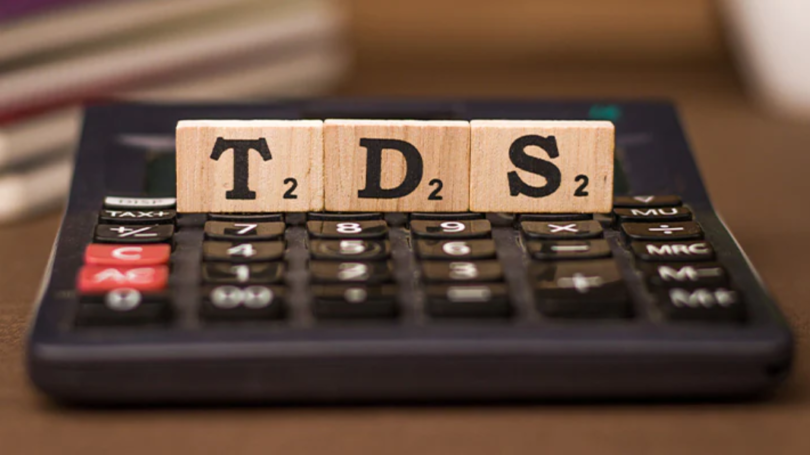TDS, these three letters can often give you a lot of trouble. Many times, you can find yourself getting confused about what exactly is TDS and how it functions. Don’t worry, you’re not alone! Tax Deducted at Source (TDS) can be a tricky concept to understand, but trust us, it is no rocket science. Having the correct knowledge about TDS is important for anyone who earns taxable income.
In this article, we have broken down everything you need to know about TDS – from what it is, why it matters and how it works. So, whether you’re a business owner or an employee, let’s dive in and demystify the world of TDS!
Table of Contents
What is TDS?
Tax Deducted at Source (TDS) is an indirect tax levied by the government on certain transactions. TDS is deducted at the time of making certain specified payments to the payees. The amount of tax deducted is a certain percentage of the payment made. The government has authorized certain deductor entities to deduct TDS from the payments made by them to the payees.
The purpose of introducing TDS was to collect taxes at the earlier possible stage in order to prevent revenue loss and to ensure timely payment of taxes.
Under the Indian Income Tax Act, 1961, TDS must be deducted on payments made for professional fees, interest, rent, dividends, commissions, etc. specified under section 194A of the Act. The current TDS rate for professional fees is 10%.
TDS can be either be collected from the person who makes the payment or from the person who receives the payment. However, it is generally easier for businesses to deduct TDS from their customers rather than paying it themselves.
If you are an Indian resident and your total income (excluding long-term capital gains) exceeds Rs 2.5 lakhs in a financial year, you are required to pay income tax. Out of this income tax liability, TDS can be used to adjust any advance tax that you might have already paid during the year or any self-assessment tax that may be due.
How Does TDS Work?
TDS is an abbreviation for Tax Deducted at Source. It is a system introduced by the Income Tax Department of India wherein tax is collected at the source of income. This means that the person who is responsible for making payments such as salary, commission, professional fees, interest, rent, etc., will deduct a certain amount of money as TDS and deposit it with the government. The deductor is required to obtain a Permanent Account Number (PAN) from the payee before making any deduction.
The amount of TDS to be deducted depends on the type of income and the applicable income tax slab rate. For example, if you are in the 20% tax bracket, TDS will be deducted at 20% on your income from salary, commissions, professional fees, etc. Similarly, if you are in the 30% tax bracket, TDS will be deducted at 30%. The deductor is required to deposit the deducted amount with the government within a specified time period. The payee can then claim credit for the deposited amount when filing his/her income tax return.
TDS helps in ensuring that taxes are paid timely and reduces the burden of paying taxes at one go. It also helps in bringing transparency and accountability in tax collection.
Who Pays TDS?
TDS is deducted by the employer from the employee’s salary at the time of payment. The amount of TDS deductions depends on the employee’s income tax slab rate. The employer is responsible for deducting TDS and paying it to the government. The employee can claim a refund of any excess TDS deductions made by the employer, if any, at the time of filing their income tax return.
What Are the Different Types of TDS?

As per the Income Tax Act, 1961, Tax Deducted at Source (TDS) is a tax levied by the government on income earned by individuals and organizations. The TDS system was introduced in India to collect taxes at the source of income and to ensure that the taxpayers pay their due share of taxes.
The TDS rate is 10% for domestic companies and 20% for foreign companies. However, there are certain exceptions to this rule. For instance, no TDS is deducted on interest earned on savings account or fixed deposits. Similarly, no TDS is deducted on dividends declared by companies.
There are four different types of TDS that are levied by the government:
1. Tax Deducted at Source from Salary: As per the Income Tax Act, 1961, tax must be deducted at source from salary if the annual income exceeds Rs 2.5 lakhs. The TDS rate applicable on salary income is 10%.
2. Tax Deducted at Source from Interest: Interest earned on bank deposits, bonds, and other financial instruments is subject to TDS if the annual interest income exceeds Rs 10,000. The TDS rate on interest income varies from 10% to 30%.
3. Tax Deducted at Source from Rent: If you earn rental income from property owned by you, tax must be deducted at source before making payment to the tenant. The TDS rate on rent is 10%.
When is TDS Applicable?
TDS or Tax Deducted at Source is a type of tax that is deducted from certain payments made by an individual to the government. It is applicable to various types of payments such as interest, dividends, royalties, etc. The deduction of TDS is done at the time of making the payment and the amount so deducted is deposited with the government.
TDS is not applicable on all types of payments. There are certain threshold limits for the applicability of TDS. For instance, TDS is not applicable on interest income if it is less than ₹10,000 in a financial year. Similarly, TDS is not applicable on dividends if they are less than ₹5,000 in a financial year.
The rates at which TDS is deducted vary depending on the type of payment being made. The rates can be either specified by the Income Tax Act or by notification issued by the Central Board of Direct Taxes (CBDT). In some cases, the payer has the option to deduct TDS at a lower rate than what is specified by law. However, this lower rate can only be applied if the recipient provides his/her PAN number to the payer.
How to Calculate TDS?
TDS or Tax Deducted at Source is a means of collecting taxes by the Indian Government. The person responsible for deducting TDS is called a deductor while the person from whom TDS is deducted is called the deducee.
The amount of tax to be deducted is decided according to the Income Tax Act and Slabs announced by the government for that financial year. The current rate of TDS for FY 2019-20 (AY 2020-21) is 10%.
There are two ways of calculating TDS:
1) On the basis of actual income
2) On the basis of projected income
If you want to calculate your TDS on the basis of your actual income, then you will have to take into account all your sources of income like salary, interest earned on savings account, capital gains, etc. and calculate 10% tax on the total sum. However, if you want to calculate your TDS on the basis of projected income, then you will have to estimate your total income for the year and pay tax accordingly.
It is advisable to go for the second option as it ensures that you don’t end up paying more taxes than what you actually owe.
E-payment of TDS
E-payment of TDS can be done online through the government’s e-tax payment portal or through authorized banks. This is a faster and more efficient way to pay TDS, as it eliminates the need for physical paperwork and reduces the chances of errors. Moreover, it is mandatory for certain categories of taxpayers to pay TDS online. E-payment of TDS can prove to be a beneficial tool for taxpayers to ensure timely and hassle-free payment of their taxes.
Conclusion
To sum up, TDS is a great way to ensure prompt and timely payment of taxes by taxpayers. It helps in reducing the burden of paying taxes at one go and makes it easier for them to manage their finances better. With Tax Deducted at Source, you can enjoy the benefit of reduced taxation liability while also ensuring that your tax obligations are duly met. We hope that now you have enough information about TDS and how it works so that now you have an idea on how to make use of this useful tool for better financial management.





